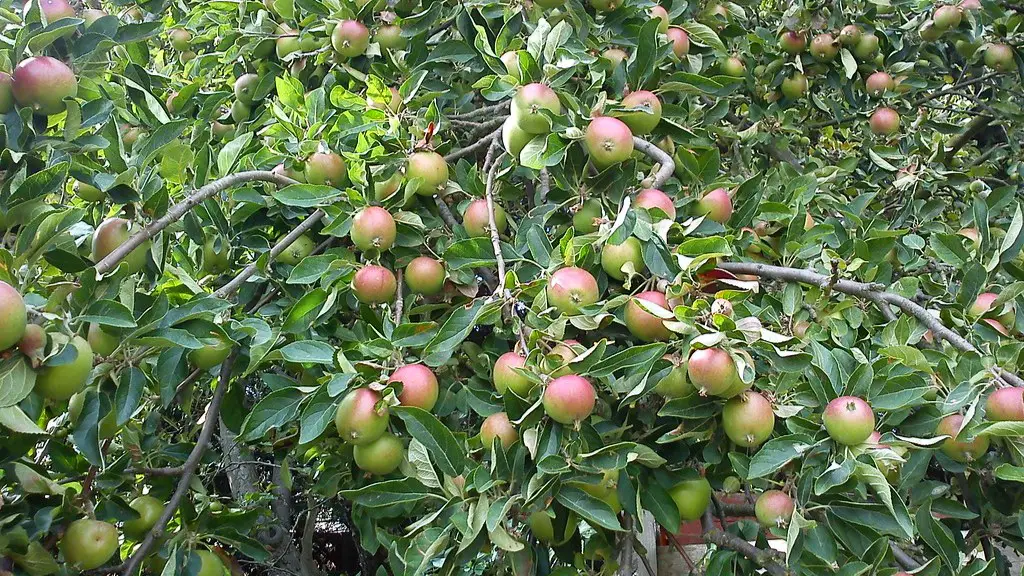The avocado tree (Persea americana) is a popular, subtropical evergreen plant. It’s native to South Mexico and Central America, but can be found all around the world, in Mediterranean climates and other locations with warm temperatures. An avocado tree can produce its own fruit for more than 100 years, making it a hardy, easy to grow tree. But how long does it take for an avocado tree to start producing fruit?
According to experts, an avocado tree usually takes between four and five years to begin producing its own fruit. Sometimes an avocado tree can take up to seven years to bear fruit, depending on the variety, the soil it’s grown in, and the amount of water and protection it receives. It’s important to note that avocado trees don’t begin bearing fruit until they are at least three years old and have grown to a substantial size.
Climate can also influence the amount of time it takes for an avocado tree to bear fruit. Avocado trees are considered tropical trees and thrive in warm climates, preferably between 65 and 70 degrees Fahrenheit. If the average soil and air temperature dips below this, the tree may take longer to bear fruit. Similarly, if temperatures remain too cold for an extended period, an avocado tree may never produce fruit.
As with most plants, a healthy growing environment is important for an avocado tree to bear fruit. If a tree is planted in rocky soil or acidic soil, it will take longer to fruit than if it were planted in loamy soil. Similarly, a tree planted in an area with good drainage will bear fruit more quickly than one planted in a boggy area. If an avocado tree has to compete with other plants for nutrients, it can take even longer to produce its own fruit.
In order for an avocado tree to produce its own fruit, it must be properly pollinated. Most avocado trees are self-fertile and will pollinate themselves, but some varieties will require a compatible pollinator tree in order to bear fruit. In this case, the pollinator tree must be planted close to the original tree in order for pollination to occur. If a pollinator tree is not available, hand-pollination techniques can be used.
Even when a tree has all the right growing conditions, it can still take a while before it bears fruit. Because fruit is sensitive and can be damaged by cold weather, frost or other conditions, fruit usually takes a while to reach maturity. On average, it can take anywhere from 12 to 18 months between pollination and when the fruit is ready to be harvested.
What factors impact the quantity of fruit?
Once an avocado tree starts to bear fruit, it can produce anywhere from 10 to 500 fruits, depending on the size of the tree, the type of avocado and the environmental conditions around it. However, trees that are older and larger tend to produce more fruit. As a general rule, an avocado tree can produce around 100 to 200 fruits per year, with a single tree capable of producing up to 500 fruits in a single season.
Additionally, avocado trees generally produce higher yields when pollinated by two compatible trees as opposed to one tree. However, avocado trees will only produce more fruits if the pollinators are planted at the same time as the main tree. If the pollinators are planted too late, the avocados will not produce higher yields compared to those pollinated by one tree.
Another factor that will affect yield size is the amount of pruning that is done during the growing season. Pruning helps avocado trees to produce a higher number of larger fruits, as it removes some of the leaves that the tree uses to produce fruits. Pruning should be done carefully as over-pruning can damage the tree and reduce the number of fruits it produces.
How can growers ensure a good harvest?
In order to ensure a successful harvest, avocado tree growers should take the necessary measures to provide their trees with the necessary conditions for growing. This includes choosing the right soil and providing adequate drainage, irrigation and protection from cold temperatures. Growers should also inspect trees for pests and make sure that any pollinator trees are planted at the same time as the main tree.
It’s also important to remember that avocado tree growth and fruit production can be affected by environmental conditions such as temperature and rainfall. If the weather is excessively hot, dry or cold for more than two weeks, trees might need more water and protection, otherwise fruit production can be delayed.
Finally, harvesting fruit at the right time is key to making sure it’s not overripe or underripe. Usually, avocados are ripe when they reach a deep, dark green colour and give slightly when squeezed. Overripe fruit will be mushy, while underripe fruit will be hard and not give when squeezed. If fruit is picked too early, it won’t ripen properly and it will lack flavour.
Do avocado trees need maintenance and care?
Yes, avocado trees require regular care and maintenance in order to thrive and produce fruit. Pruning helps to keep trees healthy and free of diseases, as does applying a glyphosate-based herbicide to control weeds. Avocado trees should be fertilized with a fertilizer such as nitrogen, phosphorus and potassium that is formulated for fruit trees.
It’s also important to check trees for diseases and pests. Common avocado pests include red mites, whiteflies, aphids, mealybugs and scale. Diseases to watch out for include anthracnose and root rot. If tree leaves show signs of curling or discolouration, growers should check for pests or diseases and apply the necessary treatments.
What can you do with the fruit once it’s harvested?
Once an avocado tree bears fruit, the possibilities are endless. Avocados can be eaten raw, mashed, as guacamole, or as part of a salad, sandwich or wrap. They can also be used in smoothies, soups and stews, baked goods, and desserts. Additionally, the oil from avocados is quite valuable and can be used for a variety of culinary, cosmetic and household applications.
Avocado leaves can also be harvested and used for different purposes. Avocado leaves contain active compounds called flavones which can be used to make tea. Avocado leaves can also be dried and turned into a powder or extract, which can be used as a natural medicinal remedy or as a natural supplement.
Conclusion
Avocado trees are hardy and can produce fruit for many years, but it usually takes between four and five years for an avocado tree to start producing its own fruit. Climate, soil, and other environmental factors can affect the time it takes for an avocado tree to bear fruit, so growers should take the necessary measures to make sure their trees are given the best chance of success. Avocado trees also require regular care and maintenance for optimal production, and once the fruit is harvested, there are plenty of ways to enjoy it.



